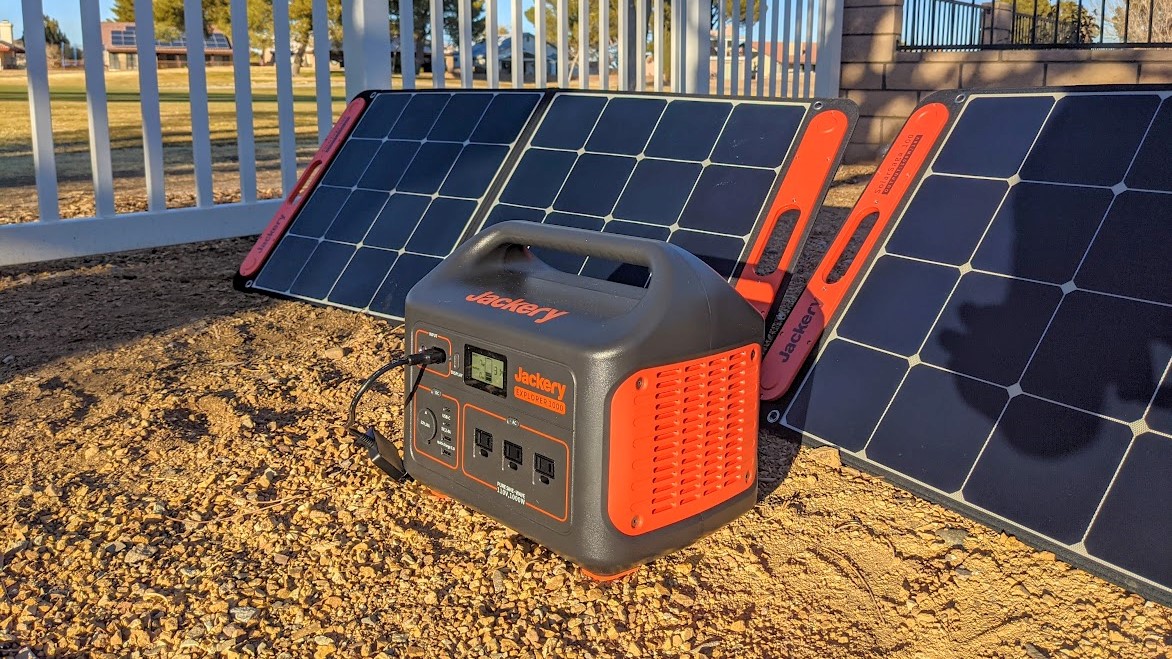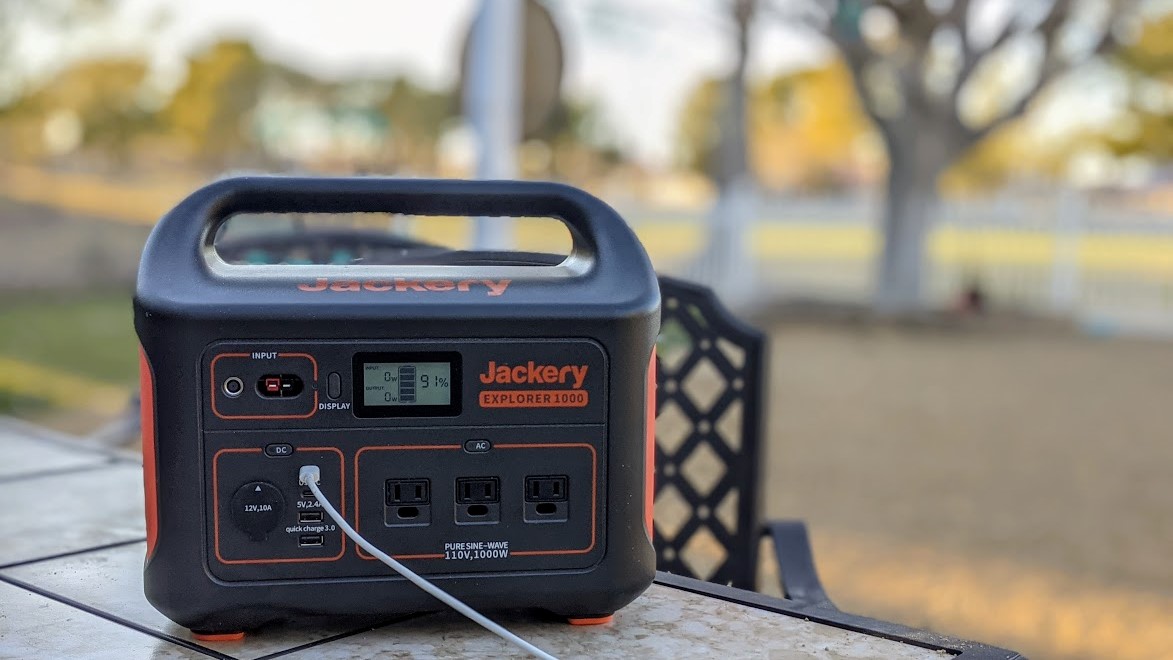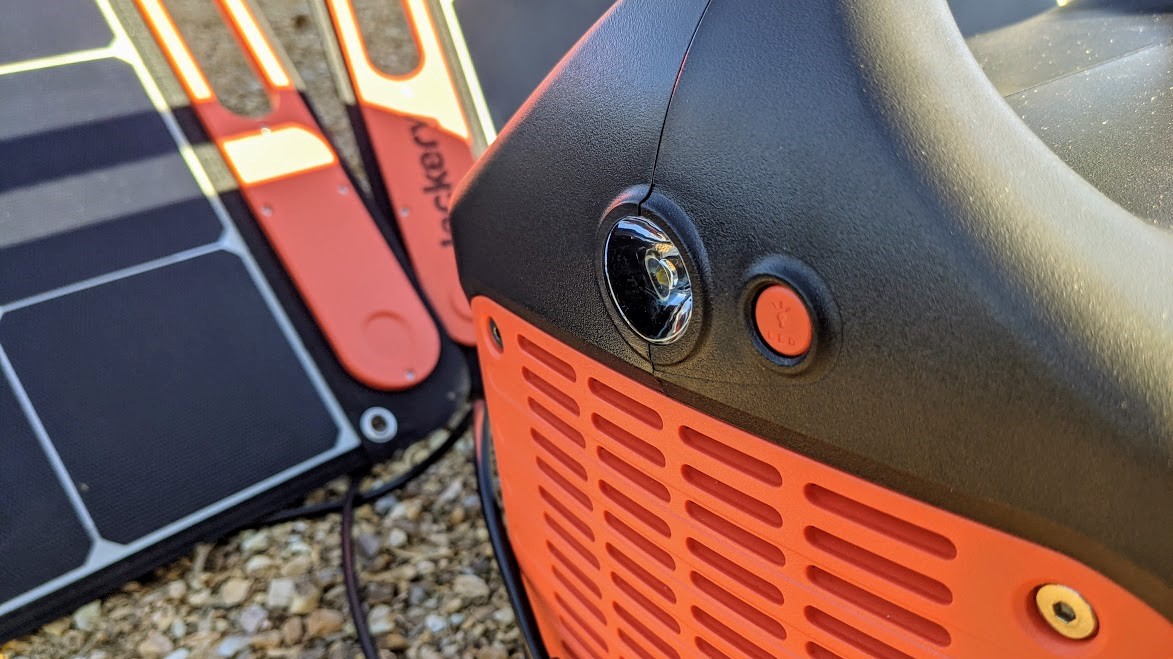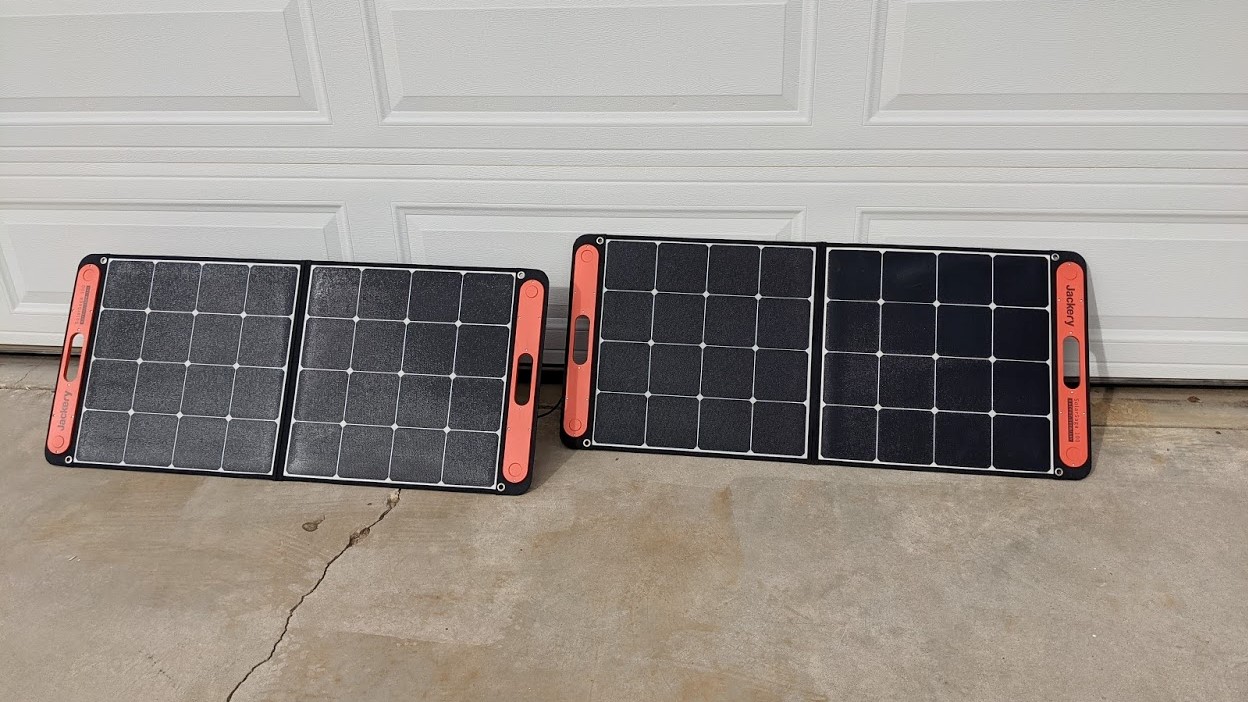When Jackery reached out to me with a review offer, I was both excited and nervous. We are currently living in a time where travel, and therefore the need for a traveling power station, is severely limited. Still, I was excited to try other ways a power station and the solar panels that are part of this bundle could help me closer to home.
I have spent a couple of months in the southern California winter trying out the Jackery Power Station and SolarSaga solar panels, and they have completely won me over.

Jackery Power station: What I like
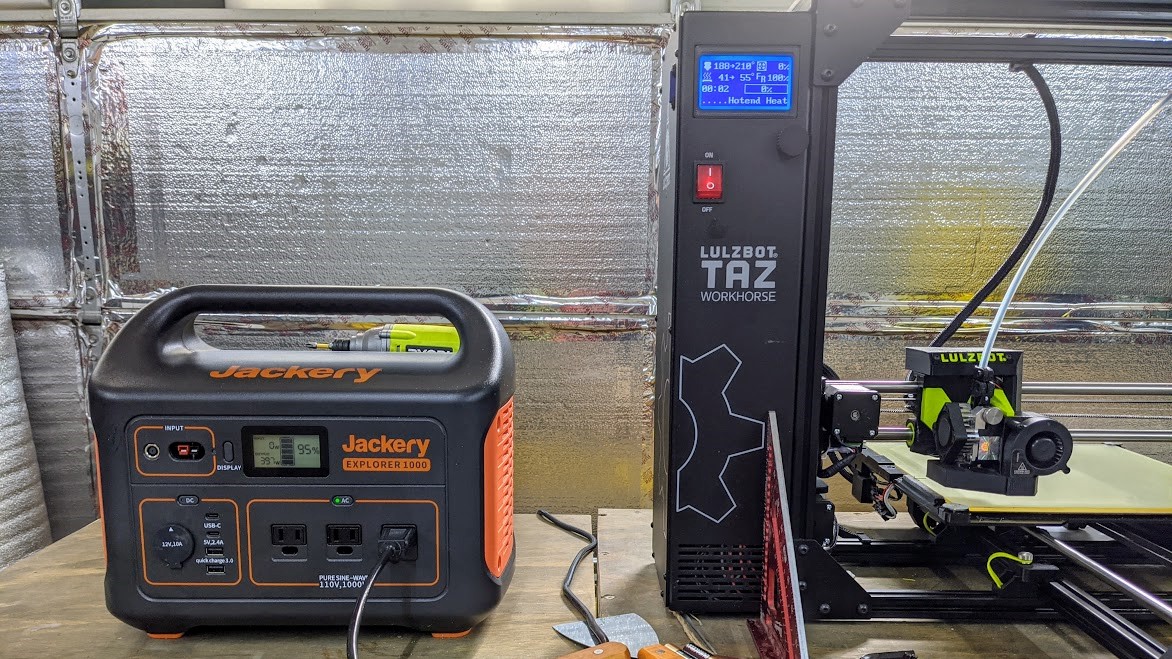
If variety is the spice of life, then the Jackery Explorer 1000 (E1000) power station is an entire spice cupboard. There are so many ways to use the E1000, each catered to by the plethora of outputs available on the front. Whether you are looking to charge phones, tablets, or laptops, or running a TV or blender, or in my case, a giant 3D printer, there is an output for you.
I don't want to get bogged down in too many numbers, but you can see from the image below that the E1000 alone can power many things, lots of times. The idea of having 100 charges for my phone while out camping for 10 days is enough to make me recommend it.

To really put the Jackery Explorer through its paces, I hooked it up to my largest 3d printer, the Lulzbot Workhorse, and ran it just like I would if it was connected to mains power. On average, the 3D printer used 200 watts of power and would have lasted around 16 hours on just battery power alone. I live in Southern California, though, and even in the winter, the sun is bright and powerful. I hooked up the solar panels for about six hours during the day, and the panels gave me around 185w of power to offset the 3D printer usage.
If variety is the spice of life, then the Jackery Explorer 1000 is an entire spice cupboard.
This meant, for the six hours that the solar panels were in use, the battery only lost about 90w, or nine percent of the total battery. This left me plenty of power to finish the 14-hour print overnight with power to spare. This makes the Jackery an ideal battery backup for the occasional power cut at home, as the 1000w battery coupled with the two solar cells can keep your fridge or your internet running long enough for the power to come back.
It is worth noting that these solar panels don't do well in bad weather. These are not designed to be left out in the rain or snow but to be put out when you can to top up the battery.
Speaking of charging. Given how much power the Jackery uses, you can imagine it takes a while to charge from empty. If you are charging from mains or a generator, it will take around seven hours which is fine, and if you charge from solar power, you can get a full charge in around eight. That is, of course, if you have eight hours of good light.
The E1000 does have another way to charge, though, and that is through a car outlet. You don't want to use it if you don't have to, as it takes 14 hours to charge fully, but it will help in a pinch if you need it.
When out camping, I found I was only topping up the Jackery and not charging it from empty. On the first day, we arrived the Jackery was at 100 percent. During the day, I put the solar panels up and used the E1000 for charging four phones, a DSLR camera battery, my MacBook, and my wife's iPad.
By the time the sun went down, the solar panels had kept the charge up at 95, and by morning, we were down to 85 percent. The next morning the panels went up again, and because everything had been charged overnight, we got the battery back up to 98 percent before using it again. And so the cycle continued. By the time we got back home, the Jackery had never dipped below 40 percent, and the solar panels kept us going the whole time.
Jackery Power station: What needs work

When I think about the Jackery Explorer 1000 bundle, there isn't a lot that needs work. Is it expensive? Yes, it is. It is also a full system comprising two solar panels and a massive power station. In the case of the E1000, you get what you pay for, and what you pay for is pure power. If the cost is too high for you, but you want a similar system, you can get the Jackery E500. It is a smaller power station and only works with one solar panel, but it is significantly cheaper.
My only other small complaint is the length of the cables for the solar panels. While they are 10 feet long, and that seems like a lot, it often means the power station needs to be close to the panels at all times. The panels have helpful stands to get the right angle, but you still need to move them around a lot to keep catching the most amount of sun. Ideally, I would want 20-foot cables to allow me to put them on the top of an RV or have the panels further away from the campground.
As you can see, these problems are not really with the system itself as the E1000, and the SolarSaga worked beyond my expectations.
Jackery Power station: The competition
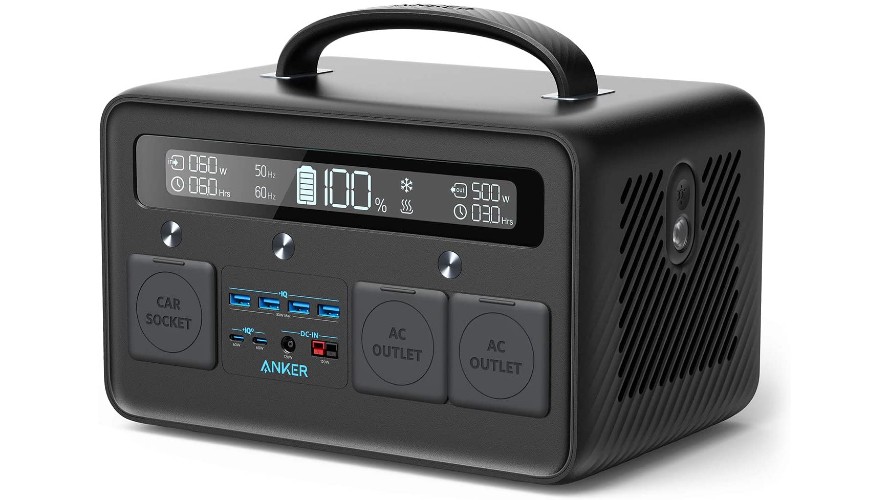
The Anker Powerhouse 2 is a slightly smaller system than the Jackery Explorer 1000, and while it doesn't come with a solar panel, Anker does have them available to purchase. The power station feels far more suited to a single-day trip or overnight stay where you would need to recharge phones and laptops instead of camping for an extended time.
The 500w limit on devices is also somewhat limiting for longer trips that might require an electric grill or something that consumes a lot of power.
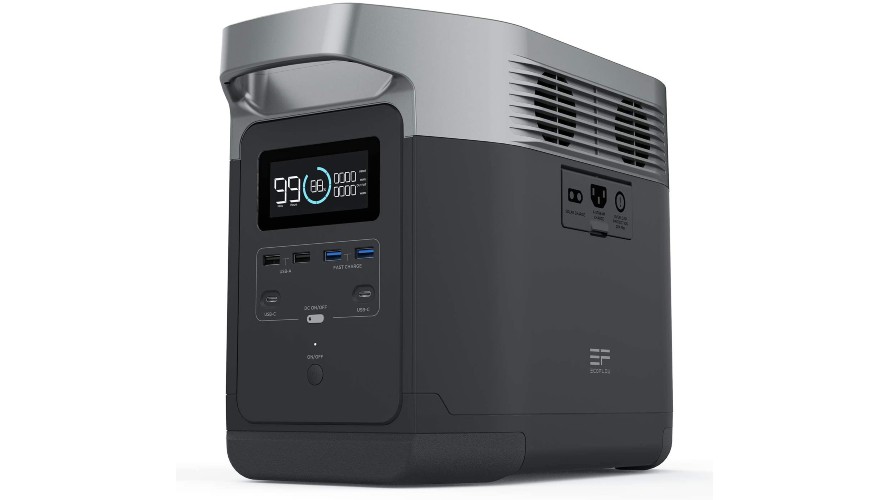
The Eco flow Power station is a recharging machine. It can recharge from zero to 80 percent in just one hour from the mains and only takes around 4 hours to charge to full power on the solar panels. Coupled with the six AC outputs, four USB-A (two of them fast charging), and two 60W USB-C, the Eco Flow is a great all-around choice, at least it would be if it wasn't for the cost.
The Eco Flow is almost as expensive as the Explorer 1000 bundle, but it doesn't include any solar panels. While I think the Eco Flow is a good alternative, the cost is prohibitive.
Jackery Power station: Should you buy?

Having access to this kind of system while I am camping with my family has become invaluable. I didn't know I needed something like this until I actually used it daily. The Jackery E1000 is big, powerful, and has enough ports to supply your entire family with power when they need it, and can even run your important things when the power goes out at home.
The solar panels are what really elevate the Jackery system, though. Having two 100W panels allows you to keep the E1000 at almost full power throughout the day, and they can be used separately as well. We took one panel to the beach and used it to keep the two phones powered up all day; no power station required.
You should get the Jackery bundle if you are outdoors kind of people. If you like any form of camping, the E1000 and SolarSaga units will make it a better experience, from roughing it to glamping.
And if you are a super nerd like me, you can use it to power things around the home without fear of a stray power cut ruining your projects.
